2023.08.02.60
Files > Volume 8 > Vol 8 No 2 2023
Effect Biosynthesis of fenugreek leaves nanomaterial on some plant's germination using saline water
1 Department of Biology. Faculty of basic education, University of Sumer, Iraq.; alamirialaa [email protected]
2 Department of Ecology, Faculty of Sciences, University of Kufa, Iraq.; [email protected].
3 Department of Pharmacognosy and Medicinal Plant, Faculty of Pharmacy, University of Kufa, Iraq
4 Department of Biology, Faculty of Science, University of Kufa, Iraq
* Correspondence: [email protected]
Available from: http://dx.doi.org/10.21931/RB/2023.08.02.60
ABSTRACT
The synthesis of new, low-cost nanomaterials that do not cause harm to the environment is of great importance in modern Science. In addition to the importance of plant use in medical purposes and the active substances they contain, this research includes the synthesis of nanomaterials from medical plant (fenugreek) Trigonella foenum extract for tolerating irrigation with saline water. The extract of the dried and ground leaves of the T. foenum plant was taken, centrifuged, filtered, and then dried. The resulting material was tested by the X-ray Diffract meter (XRD) and the Atomic Force Microscope (AFM) examining to ensure it was on the nanoscale. Aqueous dilution at a ratio of 1: 1 used to irrigation seeds of the aromatic plants (Apium graveolens and Lepidium sativum) with saline water 0.05 g / l. The germination ratios, the extreme length and the plumular were calculated after 3, 5, 7 and 10 days of germination. The germination rates were superior to the treatment with a nanomaterial and saline water mixture for 98.5% in A. graveolens and 97.2% in L. sativum. Saline water treatment showed 75% for A. graveolens and 78% for L. sativum. The extreme length reached 14.5 cm for the A. graveolens and 11.3 cm for the L. sativum in the mixture treatment after 10 days. Saline water treatment gave 6.3 cm and 8.5 cm, respectively. The plumular measurements were similar to the radical results. These results proved the synthesis of a natural bio-nanomaterial that is easy to prepare, low in cost and have a stimulating effect on germination, growth and tolerance irrigation with saline water. This improves our ability to utilize water resources and propagation methods for aromatic and medical plants.
Keywords: medical plant, aromatic plants, nanoparticle, Apium graveolens and Lepidium sativum
INTRODUCTION
Synthesis of nanomaterials is advanced materials manufacturing technique that can be produced with dimensions ranging between 1 to 100 nanometers1. Green nanotechnology materials can be synthesized from plant extracts such as aqueous or ethanol or from a chemical compound (two or more combined chemical elements) as a radical substance2. The synthesis of nanomaterials aroused the interest of researchers not only because this Science is modern but because of the importance of nanomaterials in various fields of life, especially in the field of environment 3, agriculture 4, and making the most of natural resources, especially saline water 5. But synthesizing nanomaterials in chemical, radical and physical methods is costly and has harmful environmental impacts because metals are involved in most nanomaterials, such as silver, gold, and others 6.
This research used the fenugreek (Trigonella foenum ) plant to synthesize a nanomaterial. It is a small annual herbaceous plant, height between 20 to 60 cm, with a hollow, branched stem ending in three long serrated leaves7. Used in the past to relieve cough, shortness of breath and asthma, fenugreek is widely used worldwide as a nutritional and as a medicine at the same time. Fenugreek contains volatile oil and a large amount of protein (27%), fatty acid and starch, and minerals such as phosphorous, and fenugreek is an essential source of sporogenous 8.
(Cress ) Lepidium sativum is an aromatic annual herb, 25-60 cm tall. The stem is erect, branched. The leaves are divided once or twice into irregular lobes. It is considered one of the plants sensitive to salinity. Use the L. sativum as an appetizer and digester. The leaves contain glucosinolates. It also contains ascorbic acid (vitamin C 37%). Iron, phosphorous, manganese, iodine, calcium, arsenic and potassium are minerals. The plant has antibacterial and antiviral properties 9
Celery (Apium gravolens) is a dietary herb and a medicinal and aromatic plant. It is 25-30 cm long and has serrated and lobed leaves. A. gravolens leaves are used as foods and drinks such as cocktails10. It contains vitamins A, B1, B2, B6, C, E, K, and F and minerals such as iron, calcium, phosphorous, magnesium and zinc. A. gravolens plays a role in preventing cardiovascular disease, lowering blood sugar and blood fat, lowering blood pressure and strengthening the heart. This herb has antibacterial, anti-fungal, and anti-inflammatory effects11. The importance of this study is the possibility of synthesis of a nanomaterial from fenugreek (Trigonella foenum) plant extract to improve (Cress ) Lepidium sativum and Celery (Apium gravolens) plants' ability to germinate under the conditions of irrigation with saline water. This increases our knowledge in the propagation of medicinal and aromatic plants and the improvement of the manufacture of environmentally friendly nanomaterial.
MATERIALS AND METHODS
Plant material
Preparation of the nanomaterial extract
Fenugreek leaves planted in a field belonging to the University of Kufa field was harvested. The leaves were washed with running water several times and then with distilled water. Air dry and then oven at 60°C until weight stable. Then it was ground in a German-type stainless steel grinder. It was sieved in a 0.02 mm sieve. The material was extracted (Gao et al.,2009 )method and with modulation) and then placed in the centrifuge for 10 minutes. The filtrate was taken and dried. Then an aqueous solution of the nanomaterial was made in a ratio of 1:1 using non-ionic water. It was kept in the refrigerator until use 11.
Nanomaterial Characterization
Atomic Force Microscopy (AFM)
Technique Atomic that has a size as small as the size of the atomic grid Features Lattice in its natural space. This technique is commonly called a Scanning Probe Microscope 12.
X-ray diffract meter (XRD) check
The X-ray diffracts meter (XRD) can show that the electrons of atoms absorb radiated energy and undergo transitions to higher energy levels, showing special features in the spectrum in the absorption region 13.
The CAC Laboratory (Chemistry Analysis Center) was used to conduct tests on the nanomaterial to ensure that the material is nano and to know the type, number, size and characteristics of the resulting material.
Preparation of experimental plants
(Cress ) Lepidium sativum and (Celery) Apium gravolens seeds were obtained from local markets, and all studies were conducted in the Faculty of Science, Department of Environment laboratories. During germination experiments, seeds were surface sterilized for 5 min by exposure to 3% calcium hypochlorite, rinsed thoroughly with sterile distilled water and transferred to dishes 14. Twenty seeds were placed on filter paper (Whatman 2mm) in 11 cm diameter Petri dishes with four replicates for each treatment in each experiment. The filter paper was moistened with 9 mL of distilled water or test solution after hydration15. Germination percentages, root length and feather, were measured, and the length was recorded after 3, 5, 7 and 10 days of germination.
The effect of irrigation with saline water
The effect of saline on seed germination was studied using 0.05 mg/L NaCl solutions. Petri dishes containing filter paper and seeds were placed in the growth chamber with a photoperiod of 12 h per day at 25 °C. The seed germination percentage, root and stalk lengths were determined after 3, 5, 7 and 10 days from germination 16.
RESULTS
An effective nanomaterial was obtained from fenugreek leaves. Some tests were conducted to ascertain the resulting material and its nanoscale properties.
XRD
The electrons of atoms absorb the radiated energy and undergo transitions to higher energy levels, showing special features in the spectrum in the absorption region. In biomolecules that capture or sense the energy of light, the chromophore is the part that causes the conformational change of the molecule when it is struck by light. From the results of Figure 4, the highest peak is located at the nanoscale level because it gave a specific peak in the absorption spectrum of 1 to 100 nm, Figure 4.
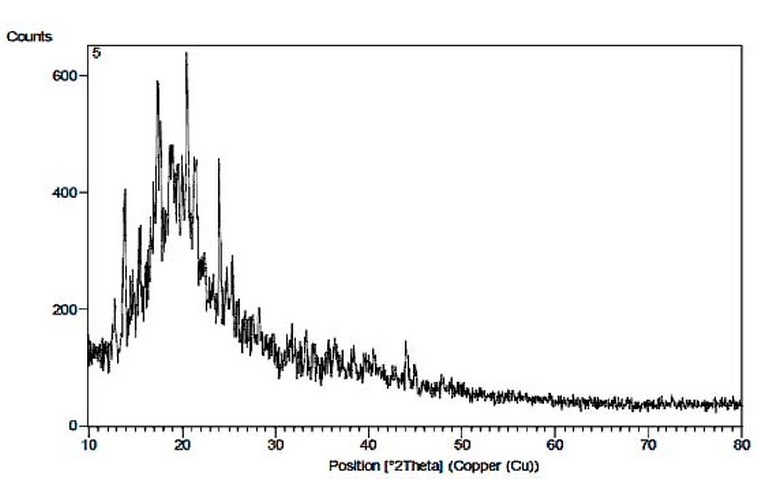
Figure 1. Determination of the active nanomaterial by XRD assay nanomaterial measurements
XRD analysis shows the crystallite size for NPs Chemical formula: C72H72Cl3N6O18P6Pr extract from (T. foenum) extract. Second chemical formula: Pr ( ClO4 )3 •6C12H12NOP. Primary reference: Vincentini, Dunstan., J. Inorg. Nucl. Chem., 33, 1749, (1971)
AFM Examination
This technique is commonly referred to as the Scanning Probe Microscope. This microscope gives three-dimensional 3D Topographical Maps of the Surface.
The measurement results of the atomic force microscope showed that the value (47.3) nm was the highest of the nanoparticle height, as shown in the results in Figures 2 to 6. Two-dimensional and three-dimensional, as well as the percentage distribution of nanoparticle diameters, were prepared, respectively. The average diameters of nanoparticles were (67 nm), and the ratios of diameters in their quantities ranged (10%) with a value of (45 nm), (50%) with a value of (60 nm) and (90%). with a value of (33 nm) as shown in Table 4.
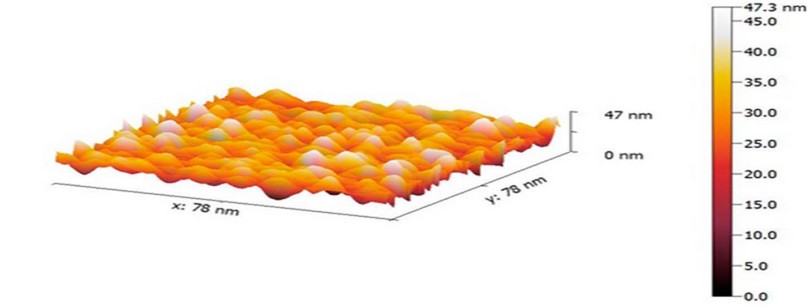
Figure 2. A three-dimensional image of the nanomaterial by AFM
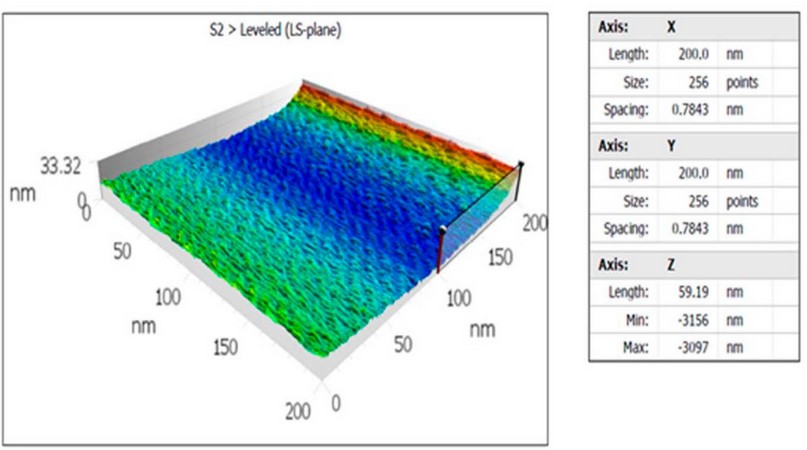
Figure 3. A two-dimensional image of a nanomaterial by AFM shows the nanomaterial measurements' lower and upper limits.
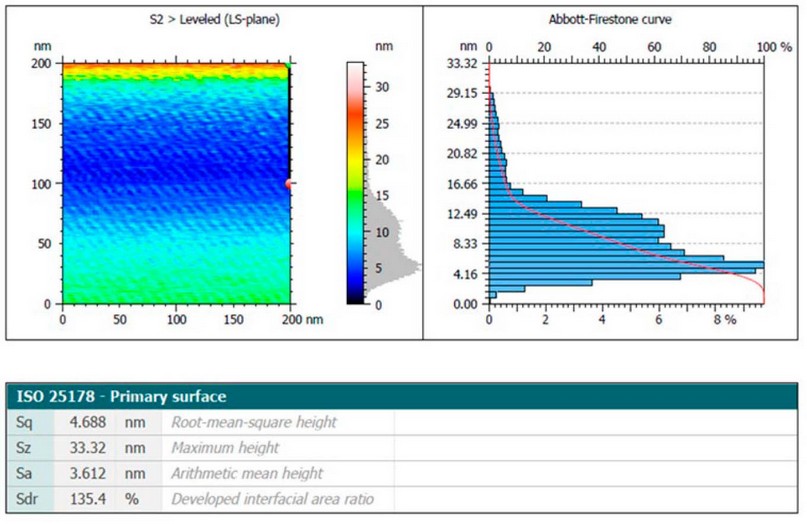
Figure 4. A three-dimensional image of the nanomaterial by AFM showing the sizes of the nanomaterial
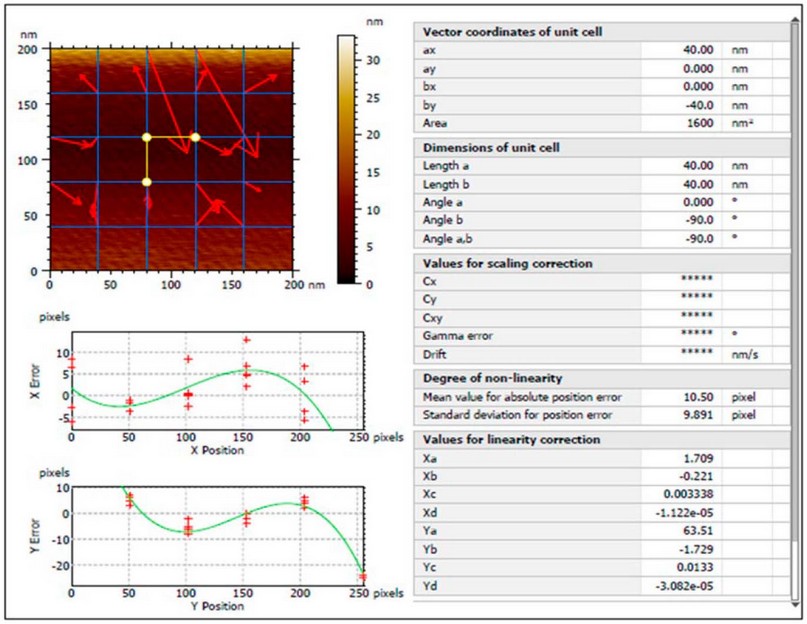
Figure 5. Distribution of molecules within the nano-sample
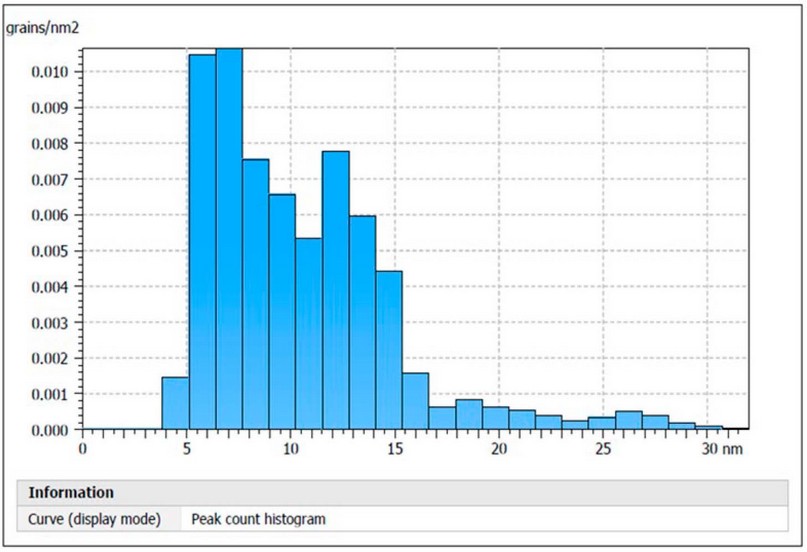
Figure 6. Peak count histogram, the number of atoms in a square nanometer and the relative distribution of diameters of the prepared nanomaterial
Application of nanomaterial to increase the tolerance of A. gravolens and L. sativum plants for irrigation with saline water.
Germination percentage
The highest percentage of germination was in the treatment of the nano mixture, where they were of A. gravolens at 98.5% and L. sativum plants. The lowest was in the treatment of irrigation with saline water. The germination percentage was 75% of A. gravolens and 78% of L. sativum, as shown in Table 1.

Table 1. The effect of nanomaterial on the germination rates of A. gravolens and L. sativum plants after irrigation with saline water
Root length
Tables 2 and 3, it is clear that the best root length was in the mixture treatment, as it was 14.5 cm in A. gravolens and 11.3 cm in the L. sativum plant on the tenth day, and that the lowest length was in the control treatment on the third day for A. gravolens plant, where it was 6.3 cm, and the L. sativum plant, which was 8.5 cm as Tables 2 and 3.

Table 2. The effect of nanomaterial on the average root length at different times of the A. gravolens plant after irrigation with saline water (cm).

Table 3. The effect of nanomaterials on the average root length at different times of the L. sativum plant after irrigation with saline water(cm).
Length of the plumular
From the results of Tables 4 and 5, it is clear that the best length of the stem was in the treatment of the mixture, where it was 3.4 cm in the A. gravolens plant and 5.5 cm in the L. sativum plant on the tenth day, and that the lowest length was in the treatment of saline water on the third day for A. gravolens and L. sativum plant, where it was 0 cm table 4 and 5.

Table 4. The effect of nanomaterials on the average length of the plumular at different times of A. gravolens plants after irrigation with saline water. (cm)

Table 5. The effect of nanomaterials on the average length of the plumular at different times of the L. sativum plant after irrigation with saline water (cm).
DISCUSSION
Nanotechnology is a new technology in line with the current scientific desire to improve current strategies for the biosynthesis of nanoparticles and to invent new ones. The biological synthesis of nanoparticles can reduce environmental pollution and risks to human health from the traditional manufacturing processes currently in use. Figures 2 to 6 represent the characteristics of the natural nanomaterial fabricated from two- and three-dimensionality, the measurement of diameters and the precise distribution of nanoparticles. The type of nanomaterial synthesis from plant extracts, which C72H72Cl3N6O18P6Pr extract from (T. foenum) extract. Second chemical formula: Pr ( ClO4 )3 •6C12H12NOP, and since the material is produced from a plant extract, this gives us evidence of the colloidal nature of the material and its stability in the suspended form, as well as the stability of the pH of the material and thus it has a high adsorption capacity to contain negative and positive ions on its surface 17. The ability of the resulting nanomaterial to attract salt ions to them and adsorb them on the surface of the material 18 and work to restrict harmful saline ions, and what remains free is undoubtedly used by the plant in its vital activity necessary for growth and development Table 1 to 5that agree with 19-20.
CONCLUSIONS
The possibility of using the leaves of the fenugreek plant in the production of a nanomaterial, a wild plant that is tolerant to stressful environmental conditions and capable of accumulating saline inside its leaves. Such an application would suit poorly drained soil or in cases of poor water management, irrigation or soil depletion by agriculture or excessive use of fertilizers and pesticides and others. It has been proven that medicinal plants such as A. gravolens and L. sativum, known to be sensitive to saline, can grow when irrigated with saline water in the presence of nanomaterial because they use salt ions for the osmotic adaptation of leaves and roots. The manufacture of natural, easy-to-prepare and low-cost nanomaterial can be beneficial in saline areas assuming that this capacity can be matched with the height and production of biomass, and saline-tolerant plant species can be the biological solution for rehabilitating saline, alkaline or saline soils. Also, halophytic plants are likely to have the ability to extract large amounts of saline from the soil.
Funding: "This research received no external funding."
Institutional Review Board Statement: "Not applicable." for studies not involving humans or animals. You might also exclude this statement if the study did not involve humans or animals.
Acknowledgments: This work was supported by the Department of Environmental and Pollution Science, Faculty of Science.
Conflicts of Interest: The funders had no role in the design of the study; in the collection, analyses, or interpretation of data; in the writing of the manuscript, or in the decision to publish the results".
REFERENCES
1. Mahdieh M, Zolanvari A, Azimee AS. Green biosynthesis of silver nanoparticles by Spirulina platensis. Scientia Iranica. 2012 Jun 1;19(3):926-9.
2. Gao J, Gu H, Xu B. Multifunctional magnetic nanoparticles: design, synthesis, and biomedical applications. Accounts of chemical research. 2009 Aug 18;42(8):1097-107.
3. Dahoumane SA, Wujcik EK, Jeffryes C. Noble metal, oxide and chalcogenide-based nanomaterials from scalable phototrophic culture systems. Enzyme and microbial technology. 2016 Dec 1;95:13-27.
4. Wang L, Zhang C, Gao F, Mailhot G, Pan G. Algae decorated TiO2/Ag hybrid nanofiber membrane with enhanced photocatalytic activity for Cr (VI) removal under visible light. Chemical Engineering Journal. 2017 Apr 15;314:622-30.
5. Guda M. A., Hakeem J. I., Alabassi, M. M.,& Almayahi, B. A. Effects of Environmental Stress on Nutrients of Typha domingensis Pers. Plant in Najaf, Iraq. Annual Research & Review in Biology, 2017, vol. 1, p.p.1-6.
http://journalarrb.com/index.php/ARRB/article/view/26235
6. Guda, M. A., Hakeem, J. I., Alabassi, M. M.,& Almayahi, B. A. Phytoremediation of Some Heavy Metals in The Soil of General Company for Tire Industry in Najaf Governorate by Wild Plant Species. Indian Journal of Environmental Protection, (2020). vol. 40(7), 758-763.
7. Guda M. A.,Alkaabiº, Z. S., Albayati, F. S., Alduhaidahawi, F. J., & Almayahi, B. A..Anatomical And Sclerophilic Traits Variation in Two Varieties Of Olive Plants (Olea europaea L) Growing Under Climate Changes ln Various.season of the year. Indian Journal of Environmental protection, 2019, Vol.40,No.1Junuary 20,77-83.
8. Guda, M. A., & Obaid, J. K.. The Spatial Variation Study of Spread the Lupus Erythematous Disease in Najaf and Babylon Governorates. Indian Journal of Forensic Medicine & Toxicology, 2019, Vol.13(2).
9. Al-Khafaji, B. A., Guda, M. A., Al-Edhari, A. H., & Altamimi, A. J. Taxonomic Study for the Genus Bupleurum L.(Apiaceae) in Iraq using chloroplast gene RPL16. Indian Journal of Public Health, 2019, Vol.10 no. 01..
10. Wang X, Yu J, Sun G, Ding B. Electrospun nanofibrous materials: a versatile medium for effective oil/water separation. Materials today. 2016 Sep 1;19(7):403-14.
11. Anjum M, Miandad R, Waqas M. Remediation of wastewater using various nanomaterials. Arabian J of Chem 12: 4897–4919.
12. M. Ajeel, A.; A. Mehdi, L. . Effect Of Eruca Sativa Seeds Powder As Feed Supplementation On Some Physiological Traits Of Male Lambs. Journal of Life Science and Applied Research. 2020, 1, 20-30..
13. Ding B, Yu J, editors. Electrospun nanofibers for energy and environmental applications. Springer Berlin Heidelberg; 2014 Apr 10.
14. Thajeel ZH, Guda MA, Mutlag NH, Jabbar BS. Investigation the effect of irrigation with magnetized saline water to improve the vegetative growth and the anatomical characteristics of the tomato plant (Lycopersicon esculentum L.). International Journal of Agriculture and Statistical Science. 2020;16(1):815-23.
15. Yoon K, Hsiao BS, Chu B. Functional nanofibers for environmental applications. Journal of Materials Chemistry. 2008;18(44):5326-34.
16. Al-Maathedy, M. H., Mohammed, Th. T. & Al-Asha'ab, M. H. 2020. The effect of vitamin e supplementation and different levels of dried tomato pomace on common carp diets (cyprinus carpio l.) on productive performance. Biochemical and Cellular Archives, 20(2): 5371-5377.
17. Wang L, Zhang C, Gao F, Mailhot G, Pan G. Algae decorated TiO2/Ag hybrid nanofiber membrane with enhanced photocatalytic activity for Cr (VI) removal under visible light. Chemical Engineering Journal. 2017 Apr 15;314:622-30.
18. San Keskin NO, Celebioglu A, Uyar T, Tekinay T. Microalgae immobilized by nanofibrous web for removal of reactive dyes from wastewater. Industrial & Engineering Chemistry Research. 2015 Jun 3;54(21):5802-9.
19. Eroglu E, Agarwal V, Bradshaw M, Chen X, Smith SM, Raston CL, Iyer KS. Nitrate removal from liquid effluents using microalgae immobilized on chitosan nanofiber mats. Green Chemistry. 2012;14(10):2682-5.
20. Liu X, Hu Q, Fang Z, Zhang X, Zhang B. Magnetic chitosan nanocomposites: a useful recyclable tool for heavy metal ion removal. Langmuir. 2009 Jan 6;25(1):3-8.
Received: May 15, 2023/ Accepted: June 10, 2023 / Published: June 15, 2023
Citation: Rahi1, A.Y.; Guda, M.A.; Abdulbary, M.; Khashan,K.T. Effect Biosynthesis of fenugreek leaves nanomaterial on some plants germination using saline water. Revis Bionatura 2023;8 (2) 60. http://dx.doi.org/10.21931/RB/2023.08.02.60
